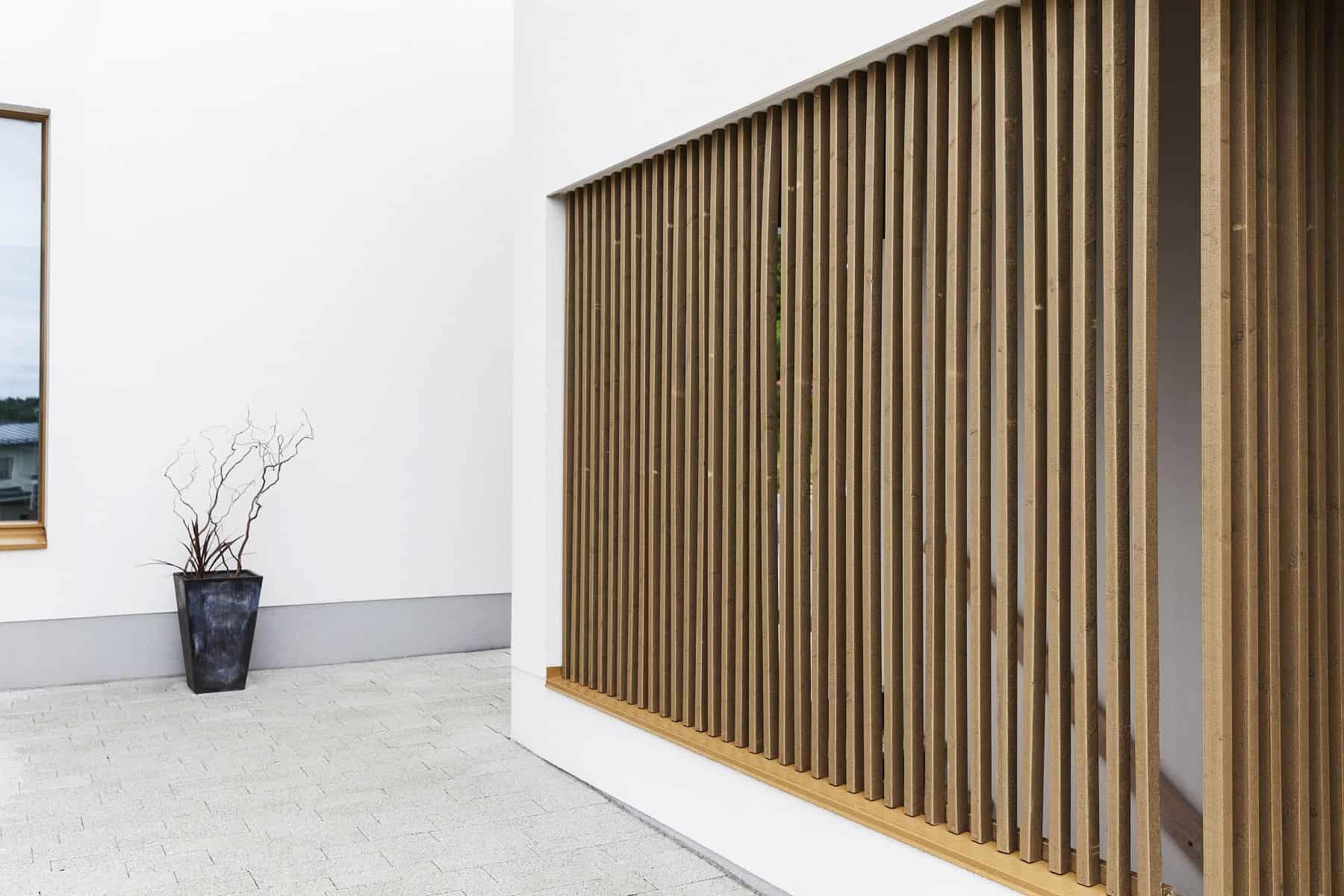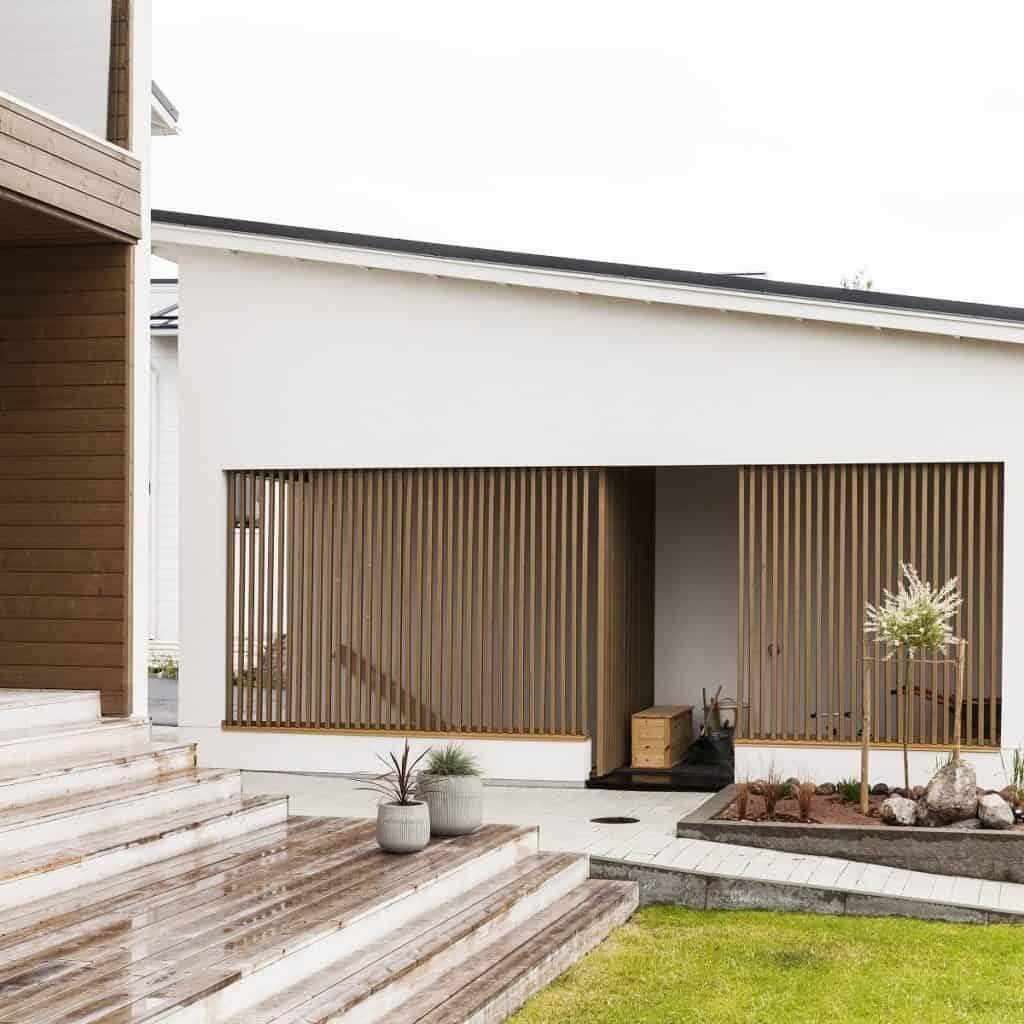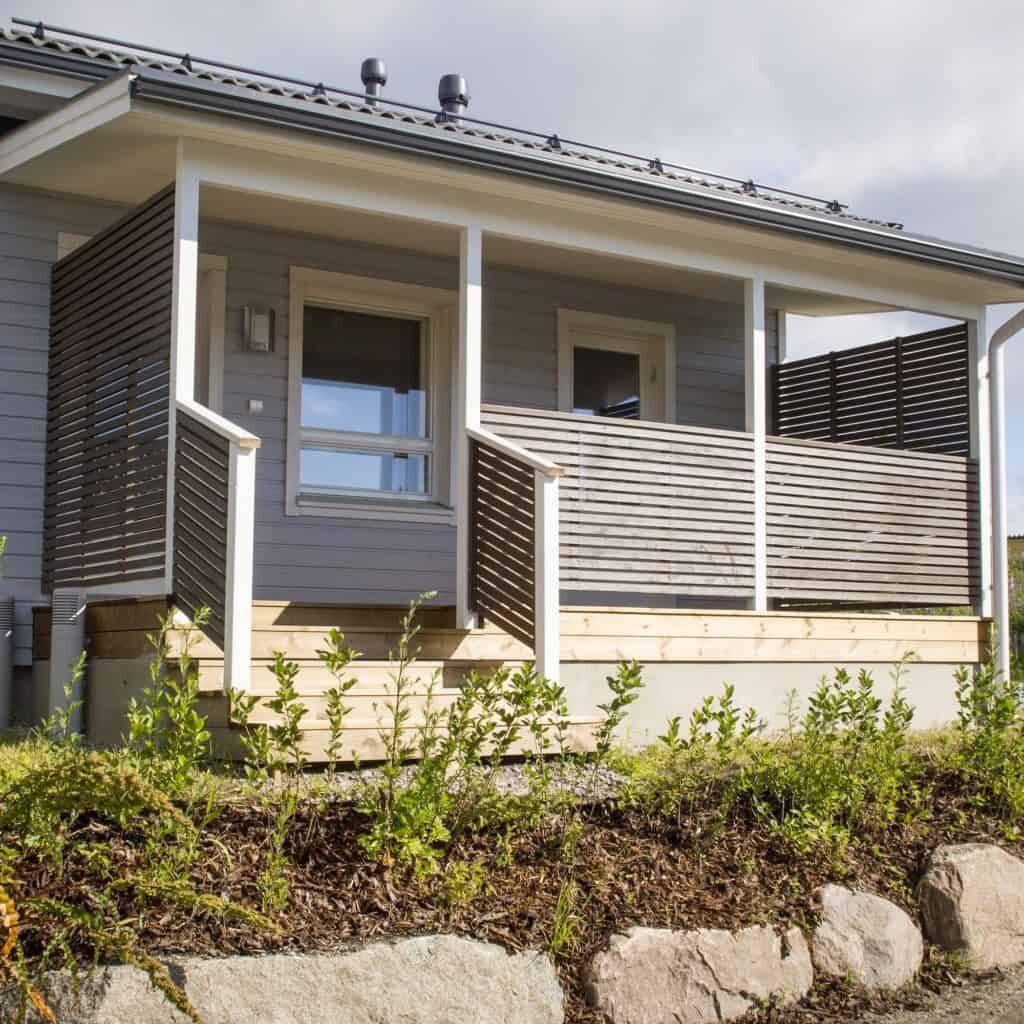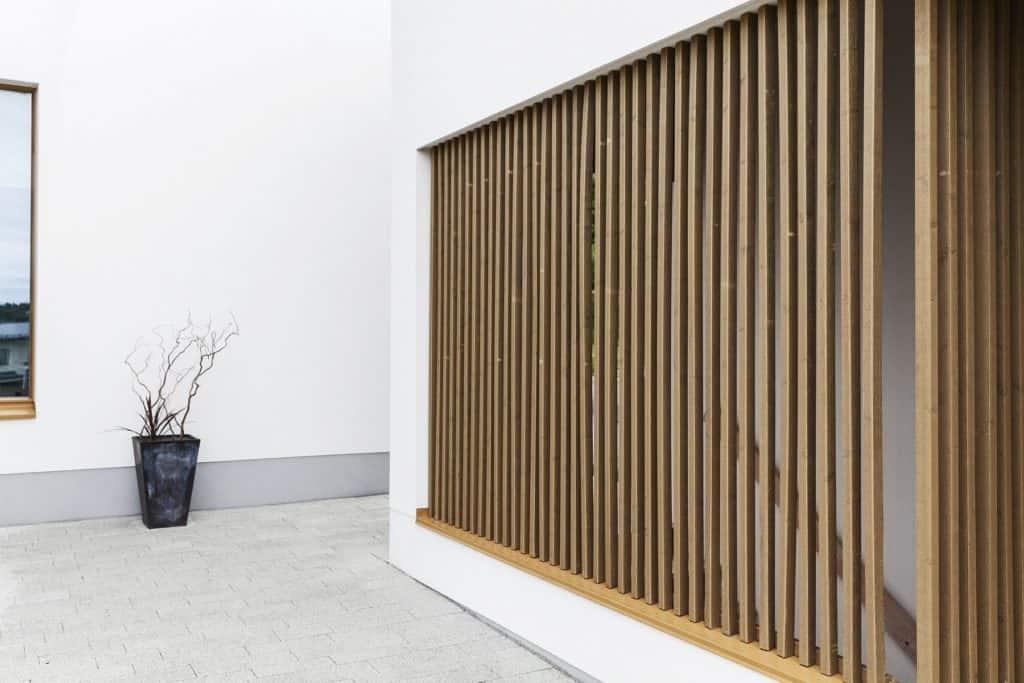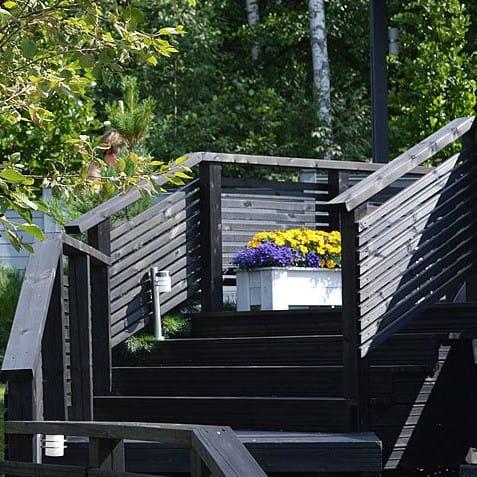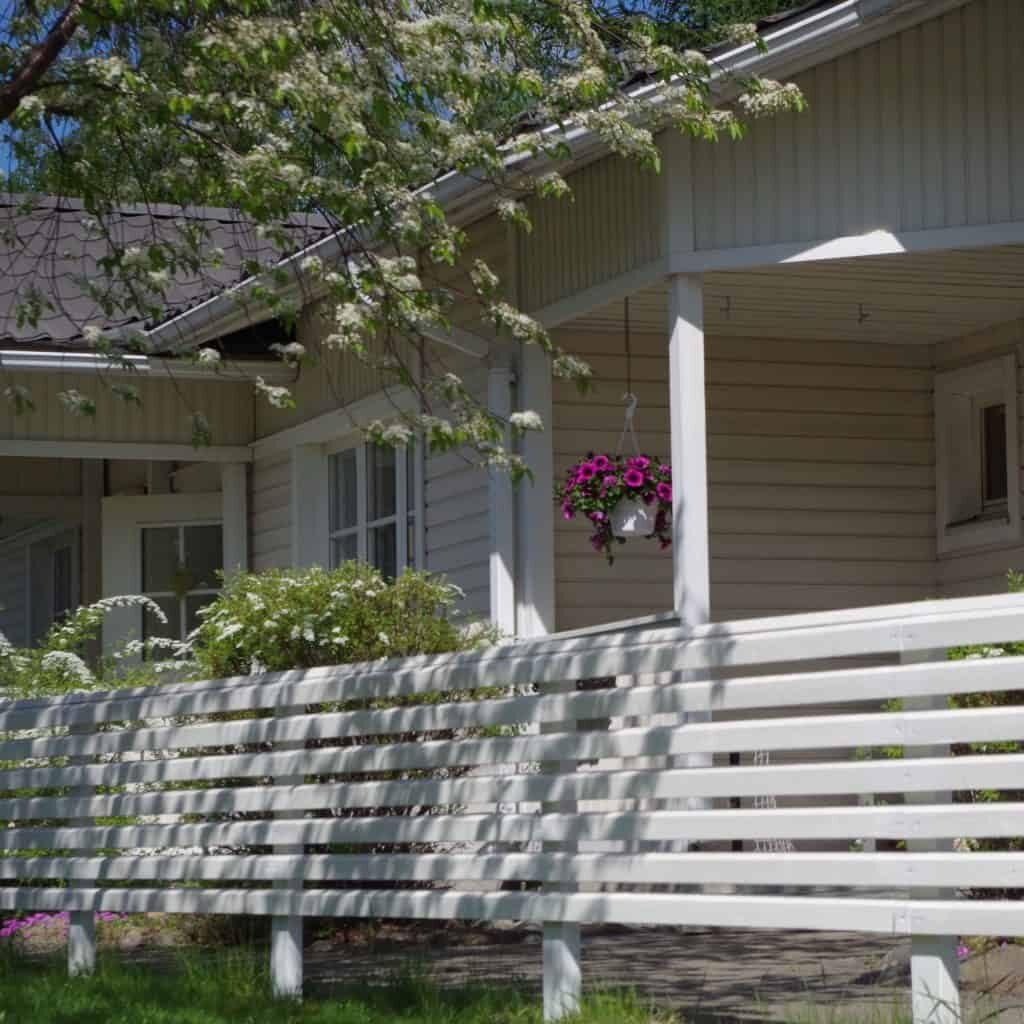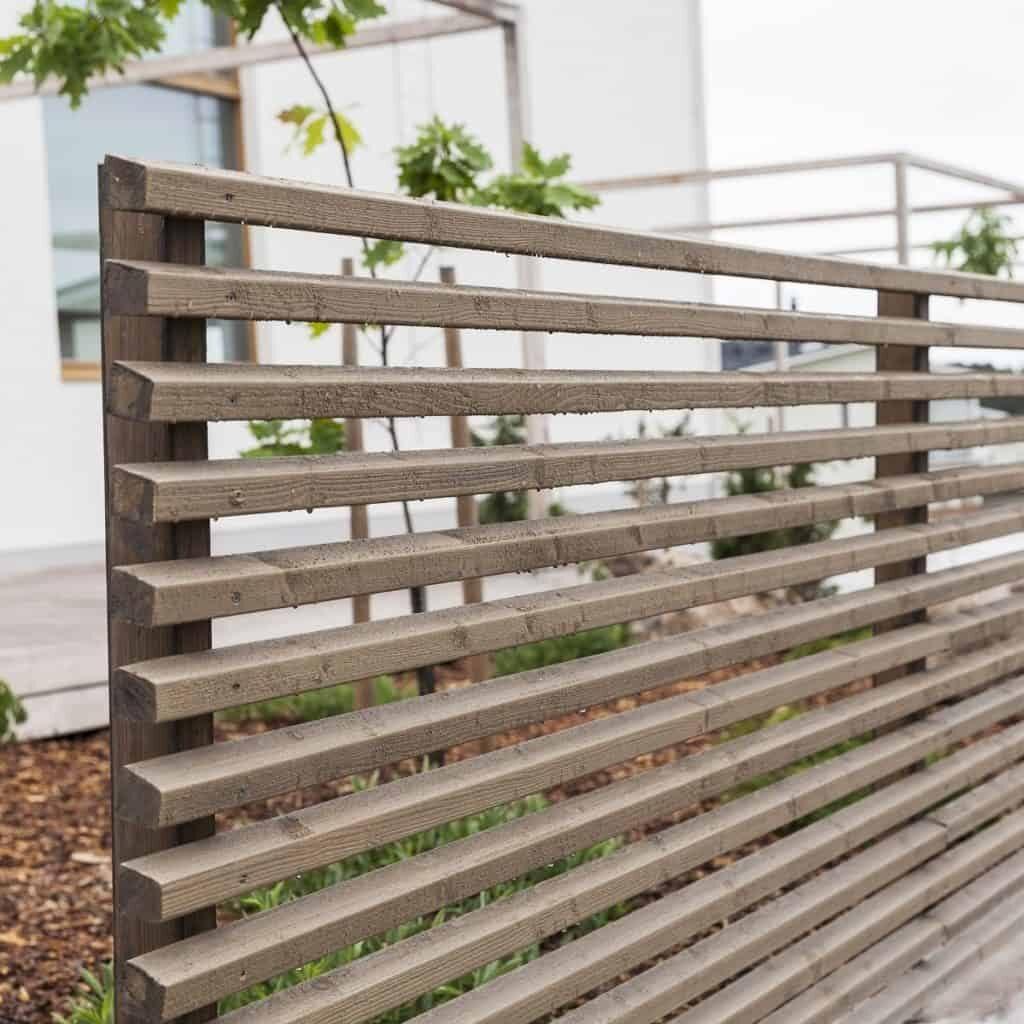To make the most of beautiful summer days, it's worth investing in your garden. The terrace is a great place for a barbecue, lounging in the sun or chilling out after a sauna. It's also important to have your own peace and quiet on the terrace. Building a patio screen is quick and easy with pre-painted lattice trim. A patio screen gives you privacy and protection from the elements, and beautifully separates different parts of the garden.
A screen for the terrace gives you privacy
The terrace screen, made of lattice stones, is an elegant extension to the façade of the house. The wooden lattice gives a lightness to the stiff surface of a stone house or naturally continues the soft line of a wooden house. The interesting shapes and bevels of the slats give many possibilities for the type of screen you can build for your terrace. Our range includes clear-lined, directional and more complex diagonal stripes. Of course pre-painted! The standard colours are white, grey and brown, but on request we can also produce the trellis in all the opaque and audible shades on the colour chart.
Suitable height of the sight barrier for the terrace
When starting to design a view barrier for a terrace, it is important to think about how high and wide the barrier should be. 1.2-1.5 metres high is enough to provide a view for the seated person. The sight barrier should be at least 1.8 metres high to protect a standing person from view. The higher the barrier, the stronger the supporting structures required. The density of the laths increases the coverage of the terrace screen.
A privacy fence brings security to the terrace
When building a terrace, you should also consider safety. Height differences between the patio and the terrace or stairs leading from the terrace should always be fenced. A screen can also serve as a protective fence on the terrace. The privacy fence for the terrace can be the same height from start to finish or the appearance of the fence can be lightened by gradually lowering the height of the privacy fence. A fence built with lattice panels is more airy in appearance than a fence built with traditional fence boards. Remember to check with your local building control office to see if there are any restrictions on the height of the screen fence in your municipality.
Build a personalised screen for your garden with trellis and plants
You can also build a screen in the yard. When building a screen in a courtyard, you can boldly combine trellises with shrubs and trees. A screen made of hedges can be transformed for a moment into a flowering hedge with a tree in the middle, giving it a beautiful autumnal colour. This adds a softness to the overall look of the fence. The trunks of a courtyard screen should be fixed to metal stakes that sink into the ground to make the fence more durable. A tree sunk directly into the ground will rot quickly due to the moisture in the ground.
What is needed to build a screen for a terrace?
A patio screen is quick and easy to build. All you need are frame posts and lattice stakes. There are many different options in terms of shape and shade. The shapes of the trims vary in widths and bevels, which have an impact on the overall appearance of the screen. A patio screen can be made up of a rectangular strip with opposite sides of equal length or a diagonal strip with sides of varying length.
Oriented strand: lath 28×68 mm and lath 40×42 mm
Vinorimat: lath 28×45/30 mm and lath 42×42/32 mm
As the laths are pre-painted, the frame studs must be painted before the laths are fixed. The laths are fixed to the frame posts with screws. If the screen to the terrace is high, make sure that the screen is securely fixed to the terrace or to the ground. The screen should be wind resistant and not tilted by leaning.
Fixing points and cut-off surfaces should be painted with a generous amount of paint to prevent moisture from being absorbed by the wood. Moisture absorption into the wood may cause cracking of the paint surface. It is advisable to use a staple, for example a piece of sawn board, to fix the battens. The sapwood ensures that the gaps between the battens are equal. You can also measure and mark the position of the battens on the frame stud.
